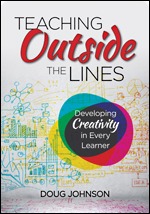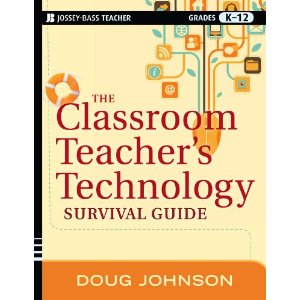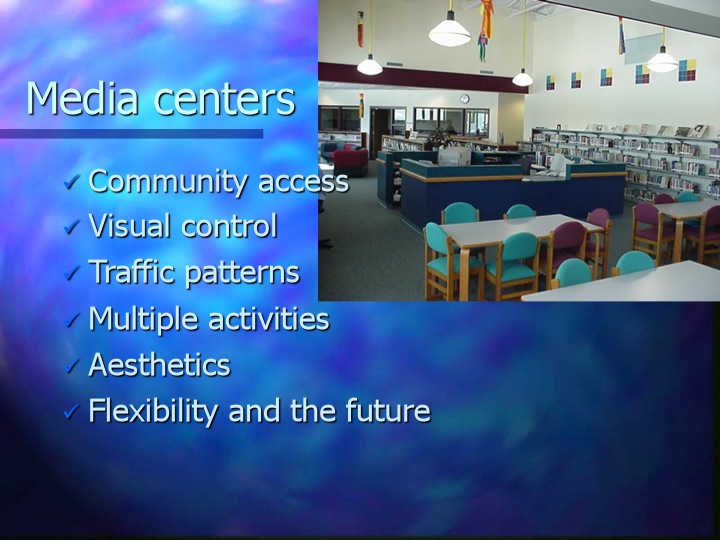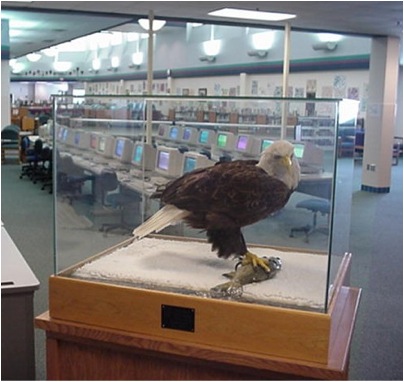
Entrance to the Dakota Meadows Middle School Media Center
Buildings reflect the values of those who design them. They are, so to speak, philosophy made visible in bricks and mortar.
When the Mankato Schools built its last new building, Dakota Meadows Middle School, in the early 90s, the project team was led by a remarkable educator - principal Jane Schuck. Thanks to her vision, the school had two overriding design principles - the "middle school concept" and "technology-infusion," Those principles are visible yet today in the building's design and program. It remains, in my experience, still the most innovative school building in Minnesota.
What principles will be on display in our new elementary building? I know two, for sure. First, this will be a "green" building. In selling the referendum, we promised that we would work for LEED certification, making sure the project is as environmentally friendly and energy efficient as possible. I am excited about this. Second, there will be increased attention paid to safety. For the first time in our district, the building design process will need to consider things like "lock downs." One of the most remarked-upon ideas from our recent visit to other schools was a entry door configuration that required all visitors to pass through the school office before gaining access to the rest of the building. Sigh...
But what about the educational philosophy behind our new building? Cowed by AYP and other NCLB threats, will our entire building be designed "to raise standardized test scores," as one of the team has already suggested? If so, what would a building like that look like?
From current practices, there seem to be many things the building would not need:
- a gymnasium, art room, music room
- certainly no playgrounds
- probably no library media center
- science classrooms only if science scores start to "count" on state tests
- no stages, no auditoriums, no large group venues of any kind
- no technology beyond computers for drill and practice in math and reading and, of course, testing
Probably small, cube-shaped classrooms with straight rows of desks all facing the front of the room would be just the ticket for extended reading and math "practice." (No thinking outside the box, for heaven's sake.) Lots of space for special education. Minimal distractions. Maximum efficiency of movement for less time off the tasks of direct reading and math instruction.
Until citizens in a single voice stand up and shout, "Being educated is about more than doing well on tests!" test-performance-schools that both educators and kids will detest will be built.
What would your "high-test" school look like?
_______________________
Update May 13 - just released from our DO:
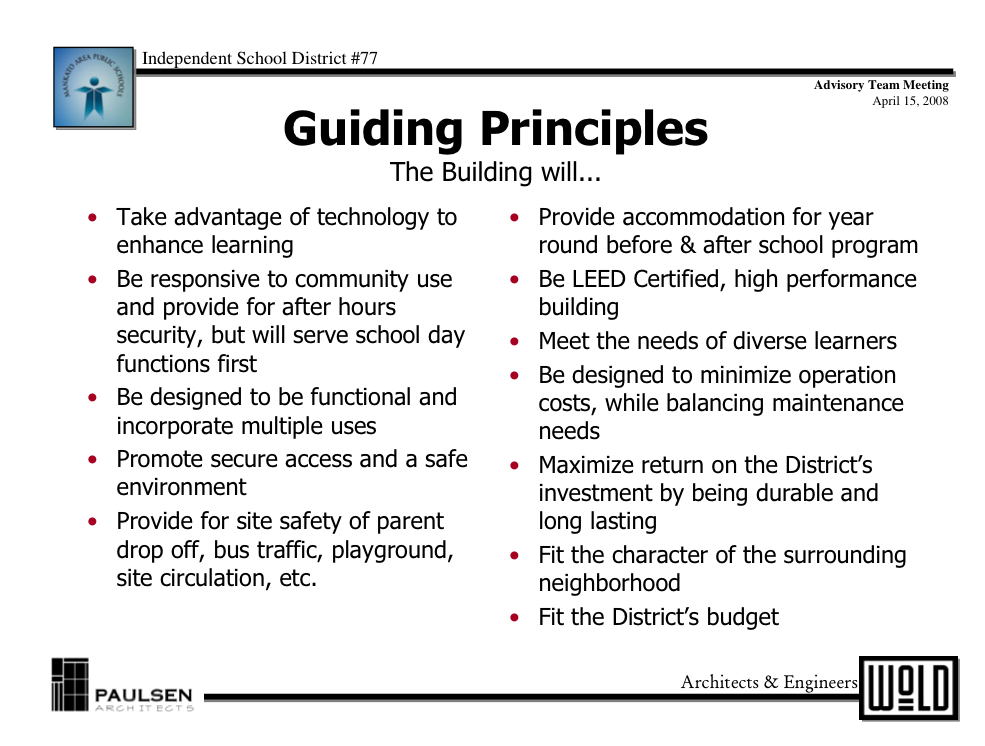
Nary a word about test scores.
 Wednesday, May 14, 2008 at 06:26PM
Wednesday, May 14, 2008 at 06:26PM 


